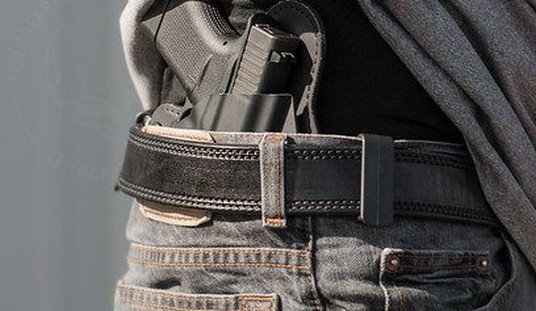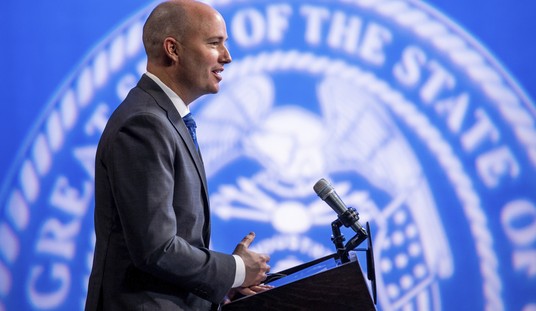For the first time since Amy Coney Barrett was sworn in as an Associate Justice, the Supreme Court will be considering two gun-related cases in its Friday conference. One case deals with a local gun ban in Boulder, Colorado, while the other challenges the seizure of two firearms from a Rhode Island man, and has huge implications not only for our Second Amendment rights, but our Fourth Amendment rights as well.
Back in 2018, the uber-liberal enclave of Boulder, Colorado passed a ban on the possession and sale of so-called assault weapons, including those that were currently owned by residents, who were forced to register their guns with the local government or else commit a criminal offense. The city council also decided to infringe on the rights of residents even more by raising the age to purchase a firearm to 21, as opposed to the state and federal limitation of being 18 to purchase long guns and 21 to purchase handguns.
Shortly after the city council’s anti-gun move, the Mountain States Legal Foundation filed suit on behalf of several plaintiffs, including Independence Institute president and Boulder resident Jon Caldara, challenging both new gun laws in federal court. Not long after that, another challenge was filed, but this time in state court, and attorneys for the city of Boulder argued that the federal case should be put on hold until the state-level challenge had been resolved. A U.S. District Judge agreed and issued a stay in Caldara v. Boulder, putting a halt to the proceedings.
It’s been more than two years since both cases were filed, but the Colorado State Supreme Court has yet to issue a ruling in the state-level challenge, called Chambers v. City of Boulder. Meanwhile, the MSLF has continued to try to get the federal case going, but they’ve been turned away by the 10th Circuit Court of Appeals. Back in October, the organization asked the Supreme Court to give the green light to the Caldara case, arguing that “the rights involved in this case, namely Boulder residents’ natural right to self-defense, are too important for a federal court to stay its hand,” and tomorrow the case will be heard in conference among the nine justices.
You can read the petition to the Supreme Court in its entirety here, but I’m not going to quote from it because the legal arguments at this point have little to do with Boulder’s gun ban itself and much more to do with when federal courts can hear a challenge to a state law. Most of the briefs are taken up with an in-depth exploration of the issue and a 1941 case called Railroad Commission v. Pullman Co., which I’m sure is fascinating to some people but makes my eyes glaze over.
Suffice it to say that the Mountain States Legal Foundation is arguing that the federal lawsuit shouldn’t be put on ice while the state case is still proceeding, given the fundamental rights that are at stake in the meantime.
Don’t expect the Supreme Court to come out and strike down Boulder’s gun ban an age restriction. In fact, that’s not even what the MSLF is asking for at this point. Right now this is about access to the federal courts while a fundamental right is being denied, and whether or not the federal courts are bound by precedent to stay the proceedings while the Chambers case inches its way through the state courts.
Obviously, I’m rooting for the Court to allow the lawsuit to proceed. We know that this case is ultimately going to be litigated in federal courts, and every day that the issues at hand go unresolved people’s rights are being put into question (and I believe, infringed).
As I mentioned, Caldara isn’t the only gun-related case that the justices will consider in conference tomorrow. In Caniglia v. Strom, though, the primary issue is related to our 4th Amendment rights against unreasonable searches and seizures.. in this case the seizure of two handguns from a 68-year old Rhode Island man.
Edward Caniglia and his wife got into an argument one afternoon in 2015, and in a moment of melodrama, he put an unloaded pistol on a table in front of his wife and said, “why don’t you just shoot me and get me out of my misery.” Caniglia’s wife of 22-years left the house instead, but when her husband didn’t answer her phone call the next day she asked police to make a wellness check.
They found that Caniglia was just fine, and he explained to police what had happened. Even though the officers said he “seemed normal,” they still told him they were going to take him to the local hospital to get evaluated. The police specifically told Caniglia that they would not take his two handguns if he voluntarily went with them, so he did. He was checked out, pronounced no danger to himself or others, billed $1,000 for the privilege of being told what he already knew, and was sent home, only to discover that police had in fact taken the two guns from the home. Not only that, they did so without a warrant.
Edward Caniglia’s been trying to get his guns back from the Cranston, Rhode Island police department ever since. Tomorrow, the justices will consider the arguments of Caniglia’s attorneys and the defense attorneys for the Cranston police department. The defendants maintain that an exception to the Fourth Amendment’s protections against unreasonable searches and seizures applies in the search of Caniglia’s home, though even the First Circuit Court of Appeals realized it was treading in uncharted waters when they agreed with the defense.
The court explained that the community caretaking exception derives from Cady v. Dombrowski, 413 U.S. 433 (1973). In Cady, the Supreme Court upheld the warrantless search of a disabled vehicle when the police reasonably believed that the vehicle’s trunk contained a gun and the vehicle was vulnerable to vandals. The Cady Court stated that police officers frequently engage in “community caretaking functions, totally divorced from detection, investigation, or acquisition of evidence relating to the violation of a criminal statute.”
The First Circuit stated that since the Court’s 1973 decision, the community caretaking doctrine has become a “catchall” for the responsibilities officers must discharge. The court has held that the Fourth Amendment’s imperatives are “satisfied” under the doctrine when police officers perform “noninvestigatory duties.” The court noted that officers enjoy a “wide latitude” in deciding how to best execute their community caretaking duties.
Until this appeal, the First Circuit only applied the community caretaking exception to the motor vehicle context. The court described the doctrine’s reach outside of the motor vehicle context as “ill-defined,” describing that several circuits have indicated that the community caretaking exception cannot justify a warrantless entry into a home, while other circuits have recognized that the doctrine allows warrantless entries onto private premises.
As a case of first impression, the First Circuit agreed with those courts that extended the community caretaking exception beyond the motor vehicle context. The court explained that because the core principle of the doctrine is to give police “elbow room” to take appropriate action when unforeseen circumstances present a hazard requiring immediate attention, the doctrine should not be limited to the motor vehicle context.
The court of appeals next considered whether the community caretaking exception extends to the police activity at issue in this appeal – the seizure of an individual whom officers have an objectively reasonable basis to believe poses an imminent risk of harm to himself or others, and the seizure of firearms that the officers have an objectively reasonable basis for thinking an individual may use to harm himself or others.
The court found that the police activities at issue are a “natural fit” for the doctrine. The court explained that these activities are distinct from normal criminal investigation, stating that when police respond to individuals who present an imminent threat to themselves or others, they do so to “preserve and protect community safety.”
This could be a hugely important Fourth Amendment case if the Supreme Court agrees to hear it, and it could serve as a check on the ever-expanding powers of the government if they rule that the police’s desire for “elbow room” doesn’t take precedence over the individual citizen’s right to privacy and security in their own home.
We could know as early as Monday what the Supreme Court plans to do with the Caldara and Caniglia cases, so look for an update after the conference orders come out Monday morning.









Join the conversation as a VIP Member